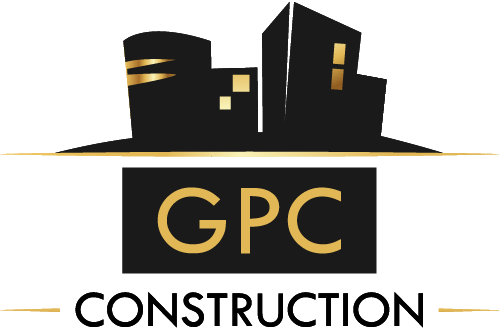If you live in Washington, D.C., you know the city’s historic charm comes with a few headaches—one of the biggest being rats. Due to aging infrastructure, row homes, and close quarters, D.C. neighborhoods are hotspots for rodent activity. One of the best ways to protect your home’s foundation—and your peace of mind—is through crawl space encapsulation.
This process doesn’t just control moisture or improve energy efficiency. In D.C., it’s also a crucial step for keeping rats out for good.
What Is Crawl Space Encapsulation?
Crawl space encapsulation involves sealing off your crawl space with heavy-duty vapor barriers, insulation, and vent covers—turning a dark, damp under-home area into a clean, dry, pest-resistant zone. In D.C.’s dense urban environment, this barrier becomes an essential line of defense against rodents.
Why Crawl Spaces Attract Rats in D.C.
Rodents love crawl spaces for the same reasons homeowners hate them:
Shelter: Rats seek refuge from the harsh winter cold and summer heat.
Moisture: Leaky plumbing or standing water attracts pests fast.
Easy Access: Older homes often have unsealed vents, cracks, or holes that are perfect entry points.
Many homes, especially in neighborhoods like Capitol Hill, Brookland, and Petworth, have unsealed or neglected crawl spaces, which make them prime nesting spots for rats.
Signs You Have Rats in Your Crawl Space
Watch for these red flags:
Scratching or scampering sounds beneath the floors
Rodent droppings or oily rub marks near access points
Strong, ammonia-like urine odors
Chewed insulation, wiring, or plumbing
If you spot one sign, chances are there’s a nest beneath your feet—or worse, a growing colony.
How Encapsulation Keeps Rats Out
Encapsulation fixes the core issues that attract and allow rats in the first place:
1. Seal Every Entry Point
Professional encapsulation begins with a detailed inspection to identify and seal all access points—vents, gaps, and cracks—using rodent-resistant materials.
2. Install a Vapor Barrier
A durable, tear-resistant liner is applied to the crawl space floor and walls. It blocks rats from burrowing, nesting, or accessing soil and debris.
3. Control Moisture and Odor
Dehumidifiers and sealed vents remove humidity, making the space less appealing to rodents (and mold). No water, no welcome mat.
4. Add Rodent Deterrents
Before encapsulation is complete, professionals may recommend or install repellents like ultrasonic devices, bait stations, or exclusion traps for added protection.
Crawl space encapsulation works well alongside foundation protection methods like basement underpinning and waterproofing, especially in older D.C. homes where moisture and pest issues often overlap.
Why D.C. Homeowners Should Act Now
In tightly packed neighborhoods, a rat problem at one home can quickly spread to another. Crawl space encapsulation, when combined with foundation moisture protection services, offers:
A strong barrier against pests
Health protection from diseases like hantavirus and leptospirosis and helps prevent long-term structural damage often caused by water infiltration or shifting soil in older D.C. homes.
Prevention of wiring and duct damage from gnawing
Better air quality and energy efficiency for your entire home
And let’s face it—no one wants to hear scratching in the walls or smell urine from under their floors.
Ready to Seal Rats Out for Good?
Crawl space encapsulation is more than just pest control—it’s a long-term investment in your home’s safety, air quality, and structural integrity.
If you’re in D.C. and ready to protect your home from rats and moisture, we’re here to help. Schedule a free crawl space assessment with Go Pro Construction today and enjoy a cleaner, quieter, rodent-free home.
Learn more about how we combine encapsulation with underpinning and structural reinforcement solutions to strengthen your foundation from the ground up.
Concerned about the budget? We offer flexible financing options through HFS and Enhancify.
Frequently Asked Questions About Crawl Space Encapsulation in D.C.
1. How does crawl space encapsulation help prevent rats?
Encapsulation seals gaps, vents, and cracks that rats use to enter crawl spaces. It also installs thick vapor barriers, eliminates moisture, and creates a dry, rodent-resistant environment.
2. What are the common signs of rats in a crawl space?
Homeowners often hear scratching beneath floors, see droppings or grease marks, smell strong urine odors, or notice chewed wiring and insulation—especially in older D.C. homes.
3. What’s included in a crawl space encapsulation service?
A typical service includes sealing all entry points, installing a heavy-duty vapor barrier, adding a dehumidifier, and incorporating rodent deterrents like traps or repellents before sealing.
4. Why are D.C. crawl spaces more vulnerable to rats?
Many D.C. homes—especially historic or row houses—have aging infrastructure, exposed crawl spaces, and high moisture levels, making them ideal shelters for rodents.
5. Should I encapsulate my crawl space if I don’t have a rat problem yet?
Yes. Encapsulation is a preventative solution that stops rats before they get in. It also improves air quality and energy efficiency and protects against mold and moisture damage.


